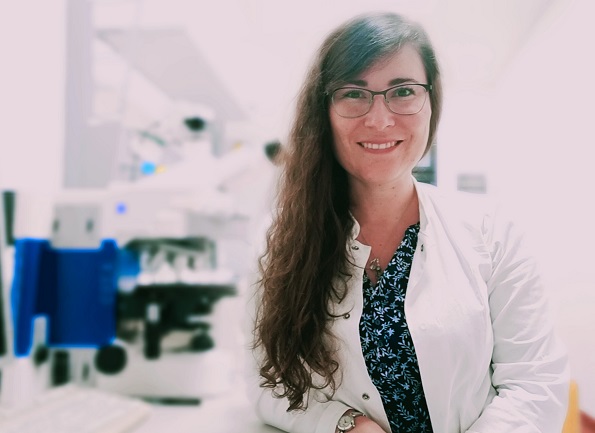Researchers at the Johannes Kepler University Linz have succeeded in producing controlled nanoparticles between 4 and 7 nanometers in size.

One nanometer is smaller than small, or, to be more precise, the millionth part of a millimeter. This makes even viruses (generally about 30-50 nanometers in size) seem enormous. But it is not just the size that is surprising as metal halide perovskite nanoparticles made at the JKU can be accurately controlled using new methods; not only in terms of size but also in terms of photoluminescence quantum yield. In simpler terms, the particles emit light, almost 100%. Dr. Yolanda Salinas (assistant professor in Prof. Brüggemann’s team at the Institute of Polymer Chemistry at the JKU) is particularly proud of the achievement: "We believe that these nanostructured perovskites are very special as achieving almost 100% light-emitting materials in a solid-state is very remarkable." The processing and manufacturing method is not only extremely simple, but also cost-effective as it only requires standard laboratory equipment, conventional chemicals and mild temperatures.
Dr. Salinas’ research was supported by visiting doctoral student Anna J. Prochazkova (Brno University of Technology, Czech Republic) as well as by Prof. Sariciftci and Prof. Scharber (JKU Institute for Organic Solar Cells, LIOS) and was published in the renowned scientific journal “Nature” in September.
Applications in Electronics
And just what are these particles good for? On one hand, metal halide perovskite nanoparticles are becoming increasingly important as they can be applied to light-emitting diodes (LEDs), lasers, and photodetectors. In the future, they may play a key role in developing new optoelectronic components (such as sensors or circuits). In addition, the nanoparticle surfaces can be decorated with natural or synthetic biological molecules, such as proteins or peptides, resulting in extending their extraordinary properties in the field of biosensors. For example, artificial peptide nucleic acid produced by JKU researchers can be used to stabilize the nanoparticles, adding additional sensor capabilities to detect a whole spectrum of nucleic acids, including DNA sequences.
Dr. Salinas added: "In general, our approach makes it possible to produce a very thin layer of nanoparticles, paving the way to a new generation of bioelectronics."








